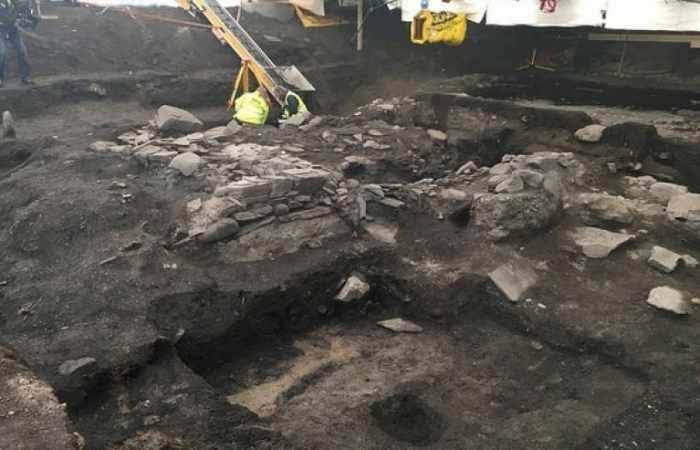Olaf Haraldsson, or Olaf II of Norway, is the country’s patron saint and the discovery was heralded as a significant find.
The church, St. Clement’s, dates from around 1015, but it was demolished in the 13th century. Its location remained a mystery until Norwegian Institute for Cultural Heritage Research (NIKU) archaeologists unearthed the site, which was dated to the time of Olaf’s rule.
The second phase of the excavation began in February and experts are now surveying a larger area. Below the ruins of the church lie more archaeological remains, according to NIKU, which include an even older church, as well as an ancient settlement.
"We have identified rich remains of an Iron Age settlement on the site, most likely belonging to a Viking Age ‘kaupang,’ sealed under thick deposits of natural sand that have been formed by a flooding of the river Nidelva,” NIKU’s excavation leader Anna Petersén explained in a statement emailed to Fox News. A kaupang was a Viking trade center.
Before accessing the kaupang site, however, experts have a lot of work to do.
“The oldest of the two churches is constructed with heavy posts dug down from the upper horizon of the sand,” Petersén added. Archaeologists plan to dismantle the stone ruins of St. Clement’s to gain access to the layers below. In order for the stones to be removed, the ruin is being laser and photo scanned with the data used to create an exact model of the ruin. Archaeologists also plan to use 3-D models of the site in a future visitor center.
“We will soon begin to remove the remains of the upper church and are eager to find more posts and postholes relating to the previous building in the sand,” Petersén explained. “And as the last of many highlights from this spectacular site we will explore the Viking Age settlement."
Excavation work at the site is expected to finish by the summer.
More about: #viking
















































